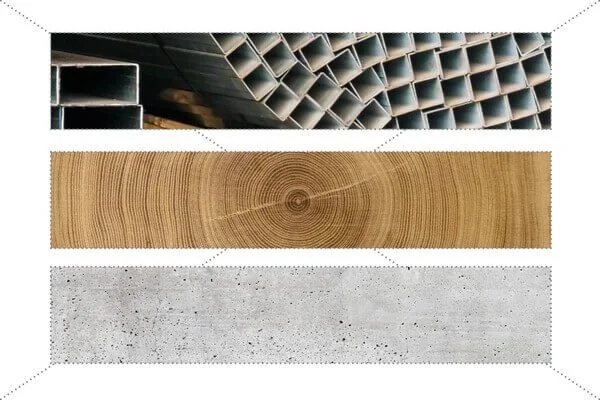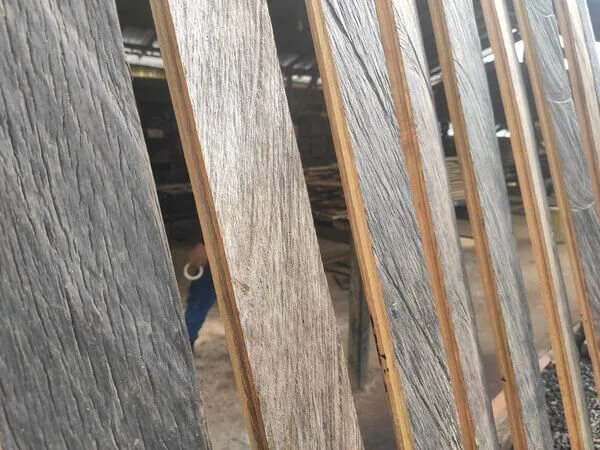The quest for sustainable building materials has led many to rediscover the benefits of hardwood. Hardwood not only brings aesthetic and structural benefits but also plays a significant role in reducing the carbon footprint of buildings. Among various types of wood, reclaimed wood stands out for its unique environmental advantages.
This article explores how hardwood contributes to sustainability, highlights the particular role of reclaimed wood, and compares these benefits with traditional construction materials.
The Environmental Benefits of Hardwood
1. Carbon Sequestration:
Trees absorb carbon dioxide from the atmosphere and store it as carbon. When harvested sustainably, hardwood continues to store carbon throughout its lifespan as a building material, thereby reducing the overall carbon footprint.
2. Renewable Resource:
Hardwood is a renewable resource. Responsible forestry practices ensure that new trees are planted to replace those that are harvested, creating a sustainable cycle.
3. Energy Efficiency:
The production and processing of hardwood require less energy compared to the manufacturing of traditional construction materials like steel and concrete. This lower energy requirement translates to reduced greenhouse gas emissions.
4. Longevity and Durability:
Hardwood is known for its durability and long lifespan. Structures made from hardwood require less frequent replacement or repair, leading to lower resource consumption over time.
The Unique Role of Reclaimed Wood
Reclaimed wood is salvaged from old buildings, barns, factories, and warehouses. Its reuse offers several distinct advantages:
1. Waste Reduction:
By using reclaimed wood, we divert waste from landfills. Reclaiming wood extends the life cycle of the material, reducing the need for new resources.
2. Lower Carbon Footprint:
Reclaimed wood has already expended its initial environmental cost of harvesting and processing. Using it again means no new emissions are associated with its production, making it a highly sustainable choice.
3. Historical and Aesthetic Value:
Reclaimed wood such as the ironwood Kaltimber specialises in, often comes with a history and unique aesthetic character that new wood cannot replicate. This can add unique visual and historical appeal to buildings.
4. Preservation of Forests:
Utilizing reclaimed wood reduces the demand for newly harvested wood, thereby helping in the preservation of forests and reducing deforestation.
Comparison with Other Traditional Construction Materials
How do traditional construction materials do with CO2? Let’s have a look at other materials contractors and architects look at when making their material selection for all their projects.
1. Steel:
- Production Energy: The production of steel is highly energy-intensive and emits significant amounts of CO2.
- Recycling: While steel is recyclable, the recycling process itself requires considerable energy.
- Durability: Steel is durable but can corrode over time, requiring maintenance and replacement.
2. Concrete:
- Carbon Emissions: The production of cement, a key ingredient in concrete, is one of the largest industrial sources of CO2 emissions.
- Thermal Mass: Concrete has high thermal mass, which can contribute to energy efficiency in buildings, but its environmental cost is high.
- Longevity: Concrete structures are long-lasting but are often difficult to repurpose or recycle.
3. Plastic Composites:
- Non-Renewable: Most plastic composites are derived from non-renewable petroleum resources.
- Environmental Impact: They are challenging to recycle and often end up in landfills, contributing to long-term environmental issues.
- Durability: While durable, they can degrade under UV exposure and physical wear.
4. Bricks:
- Energy Consumption: Brick production involves high-temperature kilns, consuming significant energy and releasing CO2.
- Recycling Challenges: Bricks are reusable, but the process of reclaiming bricks from demolished buildings can be labor-intensive and energy-consuming.
- Longevity: Bricks are durable and have a long lifespan, but they add considerable weight to structures, necessitating more robust foundations.
Conclusion
Hardwood, particularly reclaimed wood, offers substantial benefits in reducing the carbon footprint of buildings. It provides a renewable, energy-efficient, and durable option compared to traditional materials like steel, concrete, and plastic composites.
Reclaimed wood enhances these benefits by minimizing waste, preserving forests, and lowering overall environmental impact. As the construction industry seeks to move towards more sustainable practices, incorporating hardwood and reclaimed wood can play a pivotal role in achieving these goals while creating beautiful, functional, and environmentally friendly buildings.






